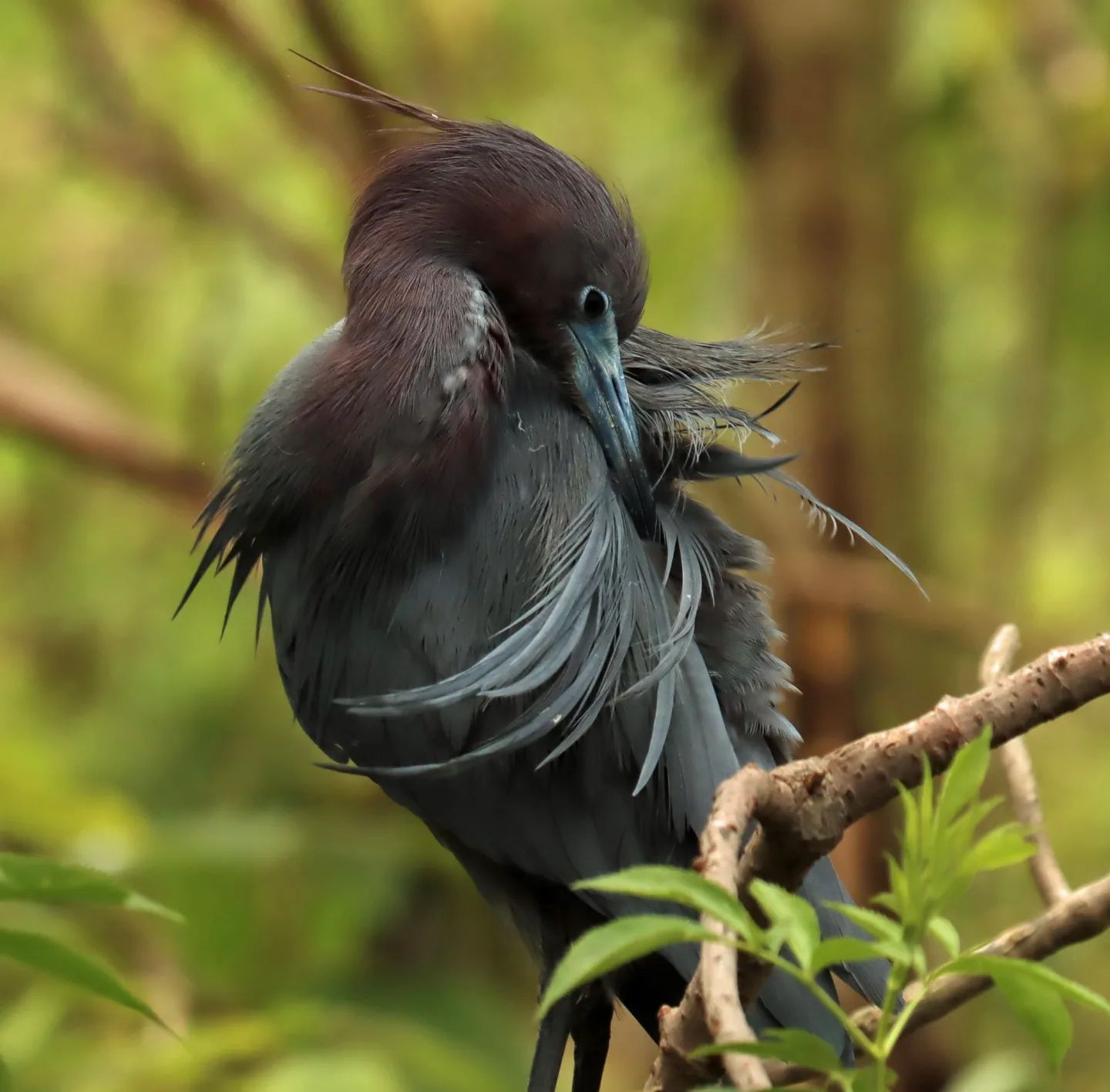– The ecological significance of the Little Blue Heron’s nesting behavior at the Alligator Farm rookery
– Adaptations and behaviors of Little Blue Herons in a unique ecosystem
– The role of Alligator Farm zoos in wildlife conservation and education
– Preening and posing: Understanding avian behavior and communication within the rookery
– Challenges in avian conservation and the importance of habitat preservation
Every year, as spring breathes new life into the marshes and wetlands of North America, a striking avian event unfolds in places like the rookery at the Alligator Farm in St. Augustine, Florida. The Little Blue Herons, elegant and skillfully adapted waders, commence their nesting rituals, transforming this otherwise reptile-centric space into a bustling bird colony. With their arrival, the landscape is painted with new shades of biology, ecology, and conservation, impressing upon visitors and professionals alike the intricate choreography of nature’s cycles.
The Little Blue Herons exhibit a striking plumage, ranging from deep slate blue in adults to a patchy white and blue in juveniles. They embrace the safety of the rookery, a habitat swirling with the paradox of danger and protection. Amid alligators, their fierce neighbors, these herons find an unlikely haven, leveraging the reptiles‘ presence to deter tree-climbing predators that would otherwise pose a significant threat to their nests and hatchlings.
This unusual neighborhood is a classic study of ecological relationships. By nesting above alligator-inhabited waters, the Little Blue Herons are less susceptible to raccoons, opossums, and other marauders that would shy away from the water’s edge. Meanwhile, the alligators might benefit from food scraps falling from the nests. This symbiosis is one of many that highlight the complexity and balance of wetland ecosystems.
Within this context, we witness the herons’ meticulous preening, which is far more than an exercise in vanity. Preening maintains their feathers’ health, ensuring waterproofing and insulation, and thus survival. The heron’s preening involves the application of oils from a specialized gland, aligning feathers for optimum aerodynamics. Observers at the Alligator Farm rookery can view these intimate routines, gaining insight into the daily life of these adept flyers.
Little Blue Herons also pose and exhibit behaviors communicating territory and mating readiness. Their delicate dances and postures are part of a complex language that ensures successful reproduction. Such behaviors speak to an innate intelligence, understanding social structures, and a genetically encoded strategy for species propagation.
Turning our attention to places like the Alligator Farm, zoos, and similar institutions plays an integral part in the conservation of species such as the Little Blue Heron. By replicating natural conditions within the confines of a managed environment, these establishments provide a haven for breeding programs, educating the public about these magnificent birds and underscoring the need to conserve natural habitats.
Understanding that each animal has its role, zoos engage in extensive research and collaboration with wildlife experts to provide habitats that mirror the conditions in the wild. They champion the cause of endangered species, often facilitating programs that can lead to successful reintroduction into native ecosystems. Moreover, by allowing the public to witness the beauty and complexity of these creatures up close, they foster a connection that can inspire future generations to commit to environmental stewardship.
Education initiatives at such institutions bridge the gap between academic research and the layperson’s understanding of ecology. They articulate the importance of biodiversity and the Little Blue Heron’s niche within it. Visitors leave these experiences with knowledge and a greater responsibility toward the environment.
Despite the tranquility of scenes at the Alligator Farm rookery, it is paramount to remember that the world’s avian populations face ongoing challenges. Deforestation, climate change, and wetland drainage take their toll. These herons, dependent on such habitats for food and nesting, are indicator species whose plight reflects broader ecological health. Their presence in the rookery not only offers a glimpse into the elegance of nature but also serves as a poignant reminder of the fragility of their existence outside these conservation spaces.
This careful balance at the rookery is constantly at risk as habitats outside designated conservation areas continue to shrink. Zoos’ active engagement in conservation efforts is essential to the future prosperity of avian species like the Little Blue Heron. Beyond the borders of these sanctuaries, we must channel our collective energies to safeguard the wetlands and ecosystems on which they rely.
In this view, the Little Blue Heron’s seasonal cycle at the Alligator Farm is a spectacle of nature and an educational narrative that unfolds before our eyes. These herons, with their peaceful preening and dramatic poses, are dramatic actors on a stage that we, as an audience, are fortunate to observe. Through zoos’ conservation and study activities, public engagement, and habitat protection, we aspire to secure a future where such performances remain a perennial feature of the natural world.
*****
Source Description
The Little Blue Herons have come into the rookery at the Alligator Farm. Swipe to see the series of preening and posing. Such beautiful feathers.
@staugalligatorfarm


